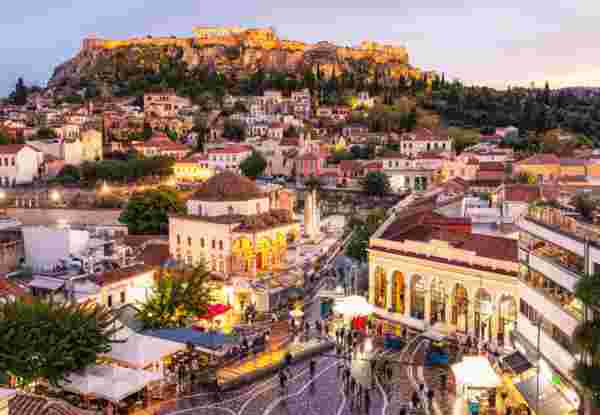The five most famous May Day customs in Greece

May Day is called the first day of May and is a day of spring celebration for many countries in the northern hemisphere. Its celebration has its roots in the pagan festivals of the past, with many of the ancient customs surviving to this day, the day of “modern” May Day in other words.
In Greece, it is celebrated ceremoniously with the creation of wreaths of flowers. The importance of May Day for the ancient peoples is because according to the calendar (for the northern hemisphere) the first day of May is between the vernal equinox and the summer solstice, i.e. it is placed at the beginning of spring.
May Day is one of the few holidays, without religious content, with events that are found in the popular culture of many European peoples, which have been preserved to this day.
The May Day Wreath
One of the most famous customs that still connects us with the traditional May Day, a celebration of spring and nature with ancient roots, is the May Day wreath.
The celebration of May Day is associated with the human joy of spring and vegetation. The fruit of these beliefs is the magic wreath made of various flowers and fruits and hung on the door of the houses.
The picking of flowers for the May Day wreath strengthens today’s human relationship with nature, from which most people have moved away due to the way of life of modern cities.
In parts of Asia Minor, in addition to flowers, they put garlic for the Basque Country, a thorn for the enemy, and an ear of corn for a good harvest. The magic wreath adorned the doors of the houses until St. John the Reaper and then, they burned it in the fires of the saint.
In the Dodecanese, they pick a flower that they call “open-eyed” and believe that whoever has it is always strong and lucky.
The “Unspeakable Water” of May Day
In the Aegean islands on May Day, the girls would get up at dawn and take with them the flowers, which they had collected from their stay, and went to the wells to bring the “unspeakable water” (unspeakable because they carried it without speaking). When they brought it home, they all washed with it.
The May Day of the Farmers
Farmers make their May with greens, fruits, garlic for the Basque Country, and thorns for the enemy.
In the areas of Smyrna, on the eve of May Day, farmers went to the countryside to cut anything that had fruit. Such as wheat, barley, garlic, onions, fig branches with figs, almond branches with almonds, and pomegranate branches with pomegranates.
In Agiasos, Lesbos, they make wreaths of all the flowers. They put in wild grass with broad leaves and yellow flowers to “demonize” the grooms.
On the island of Serifos, a wreath of nettle flowers, barley, and garlic hangs on the door.
The May Tree Trunk
In the villages of Corfu, the inhabitants walk around a cypress trunk. They cover it with yellow daisies and wrap a wreath of green branches. The young workers take the trunk to the streets singing the May song. They dress up in white pants and shirts with a red scarf around their necks.
The Leap of Fire
Young and old women gather on the eve of May Day. As soon as the sun goes down they light fires with dry branches that they have gathered several days before. While the fire is on, the women dance circular dances around the fire and sing traditional songs for May Day.
Young children, after wetting their hair and clothes, jump over the fires as a symbolic act. This aims to banish winter and disease. Then everyone takes a torch from the fire and takes it home to get rid of all the evil.
More May Traditions
Many other May Day customs are celebrated in various parts of Greece. For example, Mayopoulo, also called Fuskodendri or Zafeiri, is celebrated in Epirus and Thessaly. The custom of Klidonas (a kind of flower) in the municipality of Koziakas. Moreover, the custom of the Spells of May Day for the persecution of snakes in Epirus, etc.
May is a month that Greeks love to celebrate. The warm weather and the blooming landscapes make it a gorgeous month for traveling to Greece. Contact one of our expert travel designers here. Together create a Spring travel itinerary to the best places in Greece.
Feeling Ready?
From our blog

Visiting Athens with Kids: A helpful Guide
READ MORE
Paros for Seniors: Tips and Itinerary
READ MORE
Best Resorts in Greece for Families: Your Ultimate 2025 Guide
READ MORE
How to Enjoy Santorini for Seniors
READ MORE
Honeymoon in Paros Island
READ MORE
Rome Travel Guide: What to Do, When to go and Where to Go
READ MORE
The Best Greek Islands for Couples, According to a Luxury DMC
READ MORE
Discover Milan: Top Attractions
READ MORE
Athens in February Travel Guide
READ MORE



